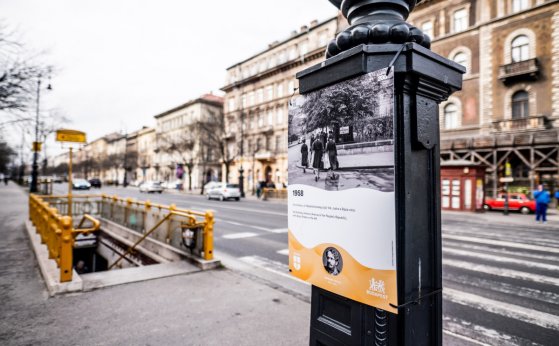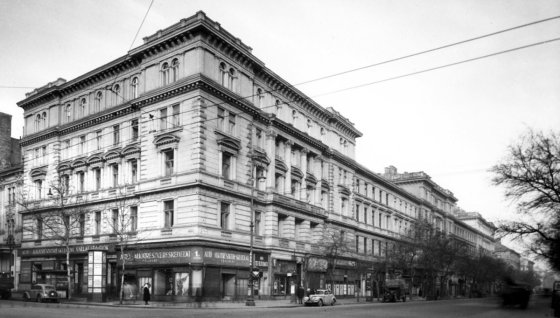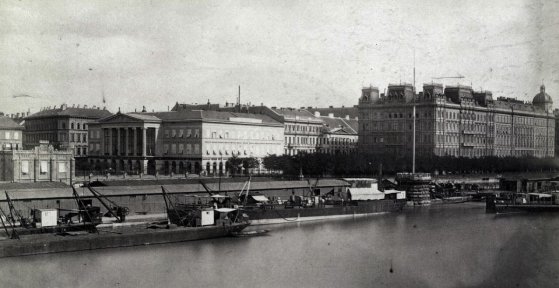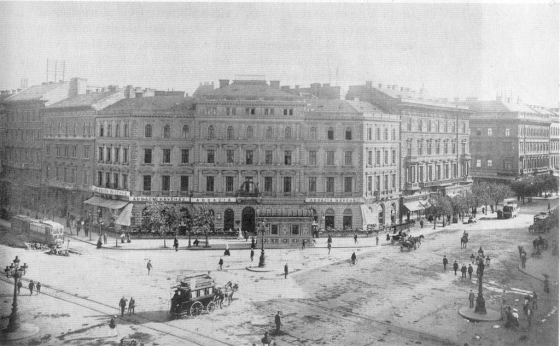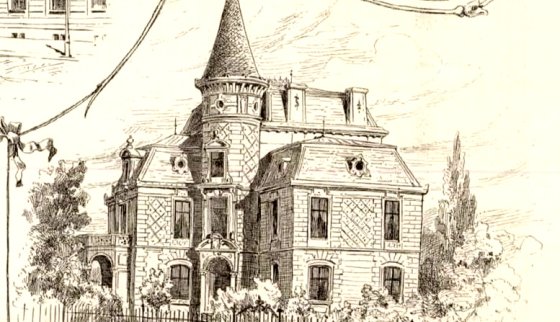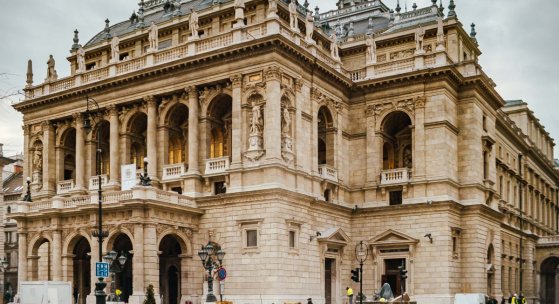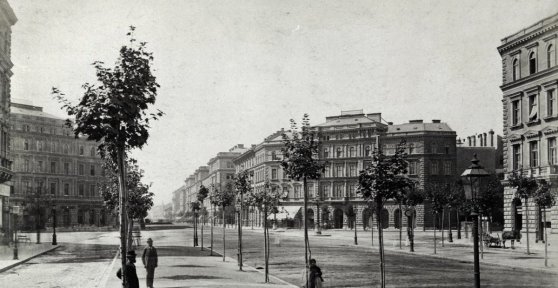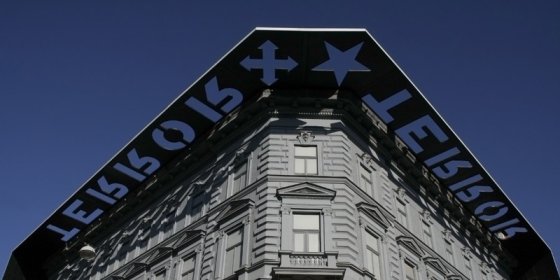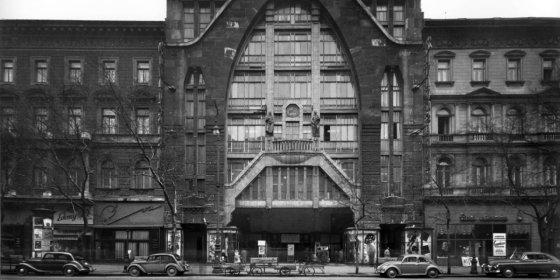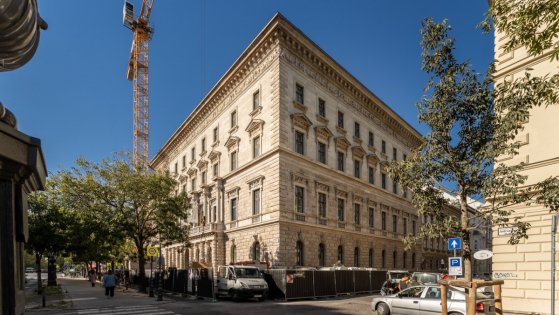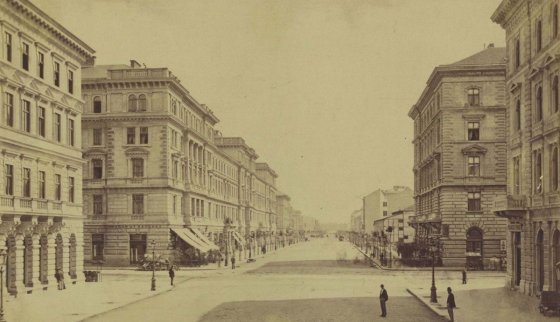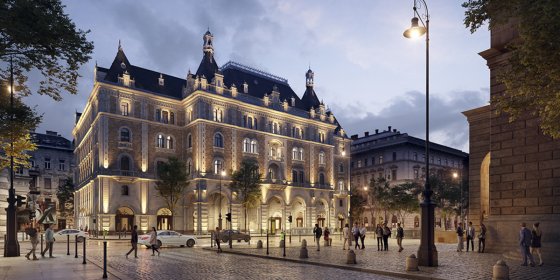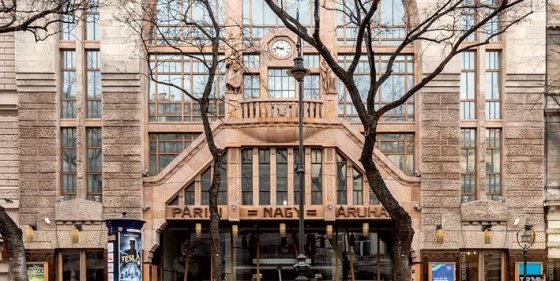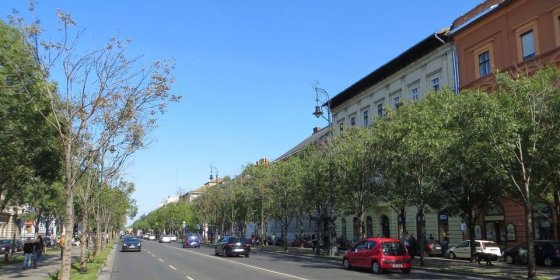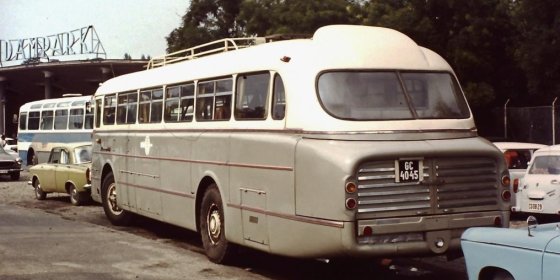 The „intertwined history” of the bridges and the city of Budapest
Which ideas and events have shaped the fate of bridges of Budapest and the cityscape? Alongside many other interesting facts, this question is also answered this newly published book by the Budapest City Archives, which introduces the history of bridges in Budapest.
The „intertwined history” of the bridges and the city of Budapest
Which ideas and events have shaped the fate of bridges of Budapest and the cityscape? Alongside many other interesting facts, this question is also answered this newly published book by the Budapest City Archives, which introduces the history of bridges in Budapest.
Andrássy Avenue
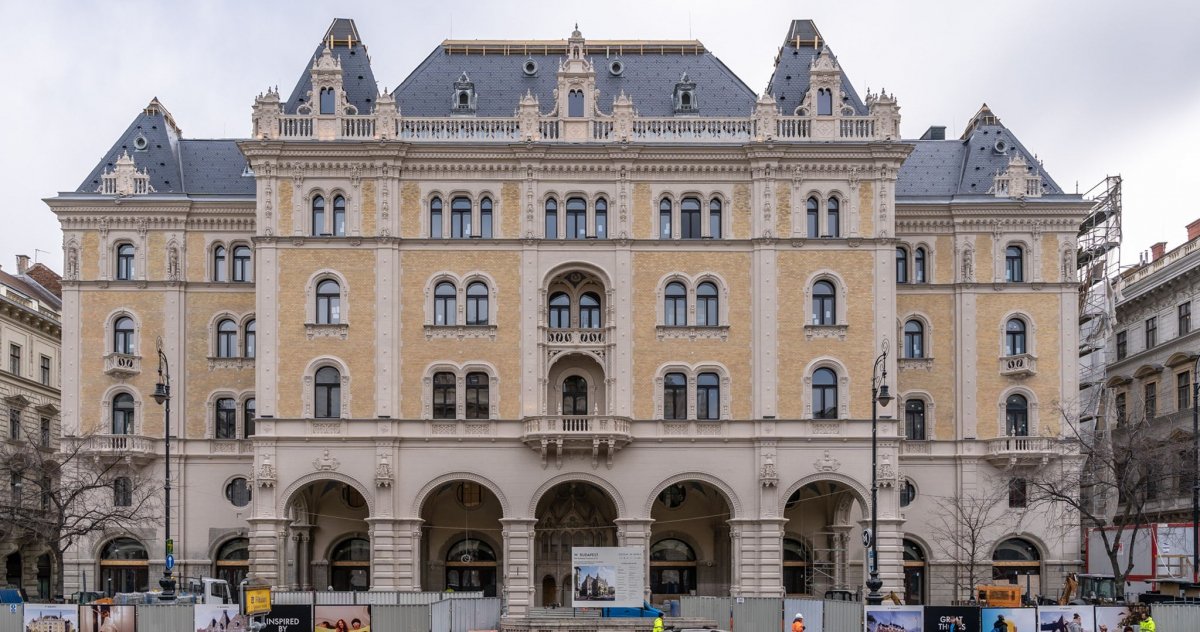 The facade of the Drechsler Palace, which is under renovation, can already be seen
The facade of the Drechsler Palace, which is under renovation, can already be seen
March 13, 2023 at 11:00 AM
The building at 25 Andrássy Avenue, the former Ballet Institute, known as the Drechsler Palace, was built for the Pension Fund of the Royal Hungarian State Railways according to the plans of Ödön Lechner and Gyula Pártos. The building is being converted into a five-star hotel, its facade is already visible. Pestbuda now presents some pictures of the building.
Outdoor photo exhibition opened about the history of Andrássy Avenue
March 6, 2023 at 7:30 PM
On the occasion of the 200th anniversary of the birth of Gyula Andrássy, an outdoor photo exhibition presenting the history of Andrássy Avenue can be seen from 6 March on Andrássy Avenue, between Oktogon and Kodály Körönd. The pictures, which were placed on the candelabras, show how traffic and the function of the road have changed. The photos also bring to life important historical moments.
Even the economic crisis could not stop construction – The first Neo-Renaissance houses on Andrássy Avenue
September 29, 2022 at 11:00 AM
Similar to the last few crisis-filled years, there were also economic difficulties in the past centuries, which also had an impact on the construction industry. Such was the crisis of 1873, which very sensitively affected the mega-investment of the era, the constructions along Andrássy Avenue. Fortunately, construction began here as early as 1872 - i.e., 150 years ago - and some residential houses were soon completed, setting a good example for further construction.
Where the Nyugat editors' favourite coffee house operated - The Krausz Palace was built on Sugárút
July 27, 2022 at 10:30 AM
The former Krausz Palace is located on 12 Andrássy Avenue, the capital's most representative road. Its designer, Zsigmond Quittner - the creator of the Gresham Palace - was only 27 years old when he designed this spectacular apartment building for the order of the wealthy manufacturer Lajos Krausz. Famous artists such as Károly Lotz, Gyula Donáth, and József Róna participated in the decoration of the house, built in 1885, whose works can be seen on the Opera House, Vigadó, and the National Bank building, among others. The Magyar Korona Coffee House later operated on the ground floor, which was also a favourite place for the editors and authors of the Nyugat.
Plans for a metropolis - the beginnings of Budapest's urban planning
July 25, 2022 at 10:00 AM
Budapest's golden age coincided with the country's economic boom: after the Compromise of 1867, the city, located on both banks of the Danube, began to develop rapidly. In 1870, in order to regulate growth, the Parliament established the Budapest Public Works Council, whose first tasks included the procurement of a general city plan. Based on this, in 1872 - one hundred and fifty years ago - Pest's first comprehensive regulatory plan was drawn up.
The birth of an iconic place - Oktogon is 150 years old, which was called Nyolcszög Square for decades
July 10, 2022 at 12:30 PM
We can safely call Oktogon Budapest's most unique transport hub: with its regular octagon shape, it quickly stands out on the map, and its easy-to-remember name means refreshment for foreigners, especially in Hungarian conditions. In addition, public transport routes famous throughout Europe intersect here: the continent's first underground railway, as well as the busiest tram lines. Its birth also coincides with the beginning of the golden age of the capital: its current form was defined 150 years ago, and for a long time it was called Nyolcszög Square.
Medieval castles inspired the former Fackh Villa on Andrássy Avenue
May 18, 2022 at 4:00 PM
It was damaged in World War II, so one of the charming villas on Andrássy Avenue was demolished, which was built as the family house of the director of the Western Railway company in the early 1880s. The building was bought by the Hungarian state at the beginning of the 20th century, which later handed it over to a female monastic order, so it is not surprising that a chapel was built there at that time. After the war, the decision-makers did not spare the villa, building a modern residential house in its place.
After almost 5 years, the renovated Opera House opens its doors today
March 12, 2022 at 2:00 PM
Restoration work began in the building of the Hungarian State Opera in October 2017. The renovation, which lasted for almost 5 years, not only serves to further illuminate one of the architectural gems of Budapest, but it also represents the basic requirements of the 21th century. The history of the construction of the Opera House also proves that these requirements have changed from time to time.
Its construction has caused controversy, today it is one of the most elegant parts of the capital - the Andrássy Avenue
March 9, 2022 at 10:00 AM
One hundred and fifty years ago, on 9 March 1872, the contract was signed, with which the construction of the representative avenue of Pest, Andrássy Avenue, could actually begin. The design of the route strongly divided the public, with many seeing it as a luxury investment serving the needs of the aristocracy. Soon after its opening, it became clear that the result went beyond all gentlemanly whims: it was one of the most important urban development enterprises of the second half of the 19th century.
Hundred thousand people at the opening, millions at the exhibition - The House of Terror Museum opened 20 years ago
February 24, 2022 at 11:00 AM
20 years ago, on the eve of Memorial Day for the Victims of Communism, the House of Terror, the former Arrow Cross and then Communist torture house, opened at 60 Andrássy Avenue. The interest was huge, almost a hundred thousand people appeared at the opening to get acquainted with two terrible periods of Hungarian history.
The Fashion Hall moved to Andrássy Avenue out of necessity - The store opened in its new location sixty-five years ago
January 2, 2022 at 3:00 PM
The Magyar Divatcsarnok [Hungarian Fashion Hall] moved from Rákóczi Road to Andrássy Avenue in 1957, to the former building of the Párisi Nagy Áruház [Párisi Department Store], which was nationalized after the war and used as a book storage. In the 1956 revolution, the store of the Fashion Hall at 72 Rákóczi Road was so damaged that a new location had to be found. The building on Andrássy Avenue was available, only 10 wagons of unsold books had to be disposed of.
The renovation of the Haggenmacher Palace on Andrássy Avenue is nearing completion
November 22, 2021 at 5:30 PM
Architect Henrik Schmahl's early masterpiece, the mansion at Andrássy Avenue 52, will soon regain its former beauty. Currently, the historical facade, corridors and loggias are being restored.
Inspired by the boulevards of Paris - in 1876 the present-day Andrássy Avenue was handed over
August 21, 2021 at 10:00 AM
The traffic between the inner city of Pest and the Városliget went through Király Street for a very long time. The narrow street was very crowded, as not only the normal traffic passed through here, but also those who wanted to go to the Városliget for a little refreshment. The Avenue [Sugárút in Hungarian], officially handed over 145 years ago, in 1876, today's Andrássy Avenue, along which lavish palaces were built in place of the one-storey houses, was made to aid this situation.
Hotel to open in Drechsler Palace – Ödön Lechner's masterpiece reborn
March 4, 2021 at 4:00 PM
Standing opposite the Opera House, at 25 Andrássy Avenue, the French Renaissance-style Drechsler Palace is to be renovated as a five-star hotel. The remodelling of the building, designed by Ödön Lechner and Gyula Pártos, will include a loft conversion. The owners have promised that the listed historical monument will be restored to its former glory.
Paris Department Store on Andrássy Avenue opened 110 years ago
March 3, 2021 at 11:00 AM
The Paris Department Store at 39 Andrássy Avenue opened to the public 110 years ago, on 3 March 1911, after its previous building at 38 Rákóczi Road burned down, and the store moved to its new location. However, the new building of the Paris Department Store was larger and more luxurious than its predecessor. It was opened to shoppers until the end of World War II.
Next section of Andrássy Avenue to be renovated – 4,500 new plants planned
November 3, 2020 at 3:00 PM
Gardening works started yesterday along Andrássy Avenue. A total of 4,500 perennial plants and 16 new trees will be planted between Oktogon and Vörösmarty Street.
How did cars get into the City Park which has also been suggested as a site for a Formula 1 track?
July 22, 2020 at 1:00 PM
The City Park will be car-free, and the Kós Károly Promenade will be closed. But how did cars get into the City Park at all? Why does a busy main road lead through City Park, and how did it become a car park?
More articles
 The „intertwined history” of the bridges and the city of Budapest
Which ideas and events have shaped the fate of bridges of Budapest and the cityscape? Alongside many other interesting facts, this question is also answered this newly published book by the Budapest City Archives, which introduces the history of bridges in Budapest.
The „intertwined history” of the bridges and the city of Budapest
Which ideas and events have shaped the fate of bridges of Budapest and the cityscape? Alongside many other interesting facts, this question is also answered this newly published book by the Budapest City Archives, which introduces the history of bridges in Budapest.
 The Bridge Report, which brought a turning point in the history of Budapest
A travel report that changed the history of Pest and Buda, as well as Hungary. The little book contributed to the change of half a thousand years of legal customs and the implementation of an investment of unprecedented size and technical quality. This book was The Bridge Report [Hídjelentés in Hungarian].
The Bridge Report, which brought a turning point in the history of Budapest
A travel report that changed the history of Pest and Buda, as well as Hungary. The little book contributed to the change of half a thousand years of legal customs and the implementation of an investment of unprecedented size and technical quality. This book was The Bridge Report [Hídjelentés in Hungarian].
 Drama on the university wall - The heroic monument was planned 95 years ago
In the constant hustle and bustle of the Egyetem Square in Pest, the students may not even notice the monument that decorates the short section of wall between the church and the central building of ELTE. However, it commemorates their predecessors, the heroes who fought for their country in World War I, and those who heroically helped them. The first design of the dramatically collapsing soldier was born in 1928, ninety-five years ago.
Drama on the university wall - The heroic monument was planned 95 years ago
In the constant hustle and bustle of the Egyetem Square in Pest, the students may not even notice the monument that decorates the short section of wall between the church and the central building of ELTE. However, it commemorates their predecessors, the heroes who fought for their country in World War I, and those who heroically helped them. The first design of the dramatically collapsing soldier was born in 1928, ninety-five years ago.

